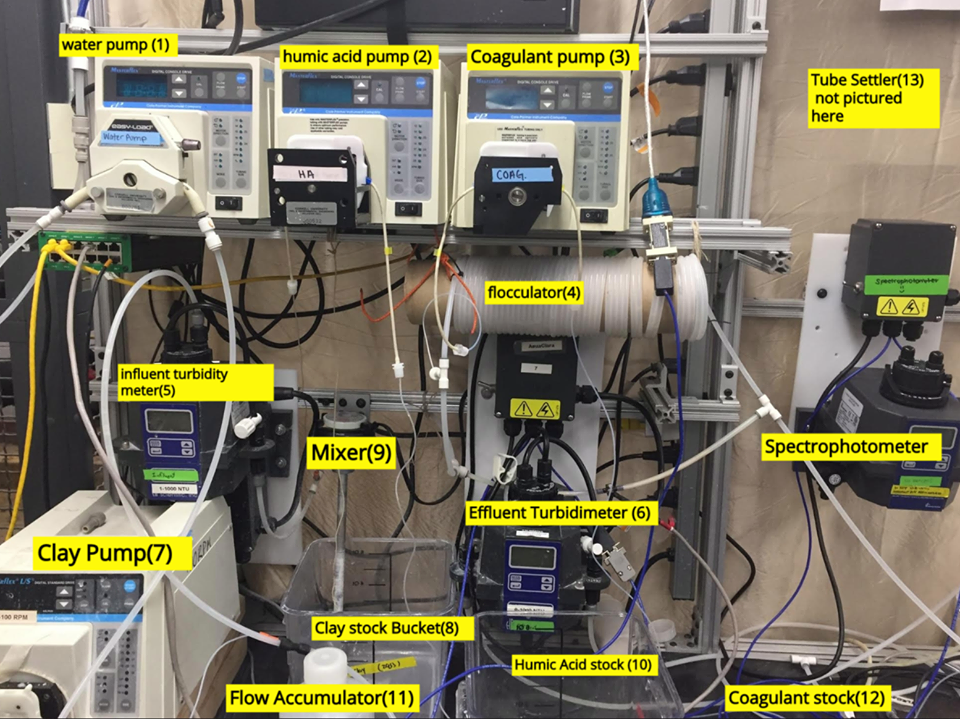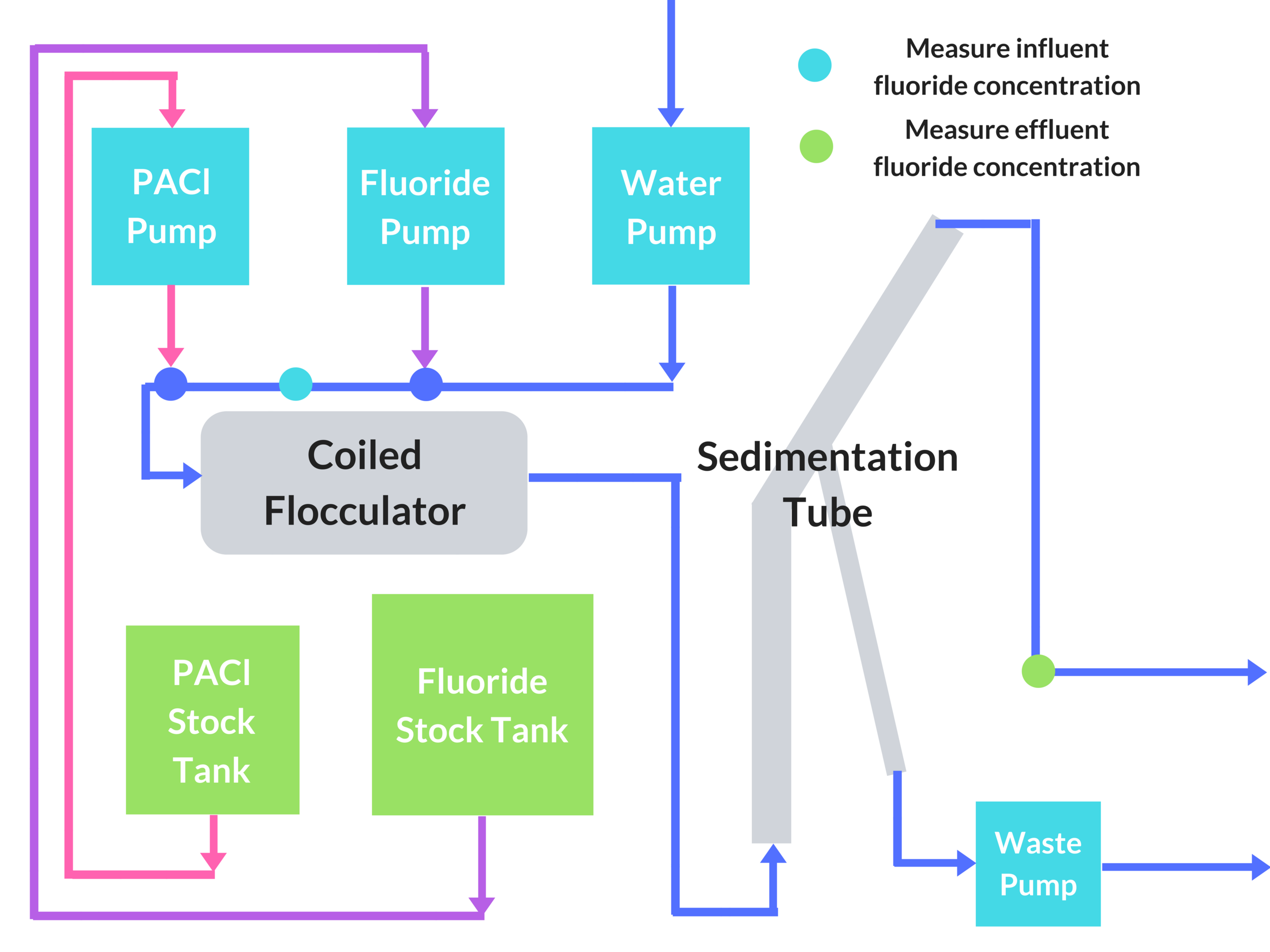August Longo, Pooja Desai, Katie Dao
Abstract:
In many developing countries, high levels of fluoride in groundwater have been found to have chronic effects on bone health. Though some countries intentionally add fluoride to water in order to strengthen teeth, overexposure to fluoride has grown as a problem worldwide. The Fluoride team has been working to solve this very issue, by testing and developing a fluoride removal system fit for AguaClara plants in India and Honduras. In spring 2016, the Fluoride team built on the previous work of the Fluoride and Countercurrent Stacked Floc Blanket Reactor team to create a more optimal and efficient fluoride removal system. In the fall, the Fluoride team worked to understand the efficiency of fluoride removal using polyaluminum chloride (PACl) while the CSFBR team developed a reactor system to remove undesirable soluble particles. This semester, a new system was built consisting of a single floc blanket formed using PACl and clay. In the future, this system will be optimized by changing flow rates and dosages to better understand fluoride treatment and optimize AguaClara plants for fluoride removal.













